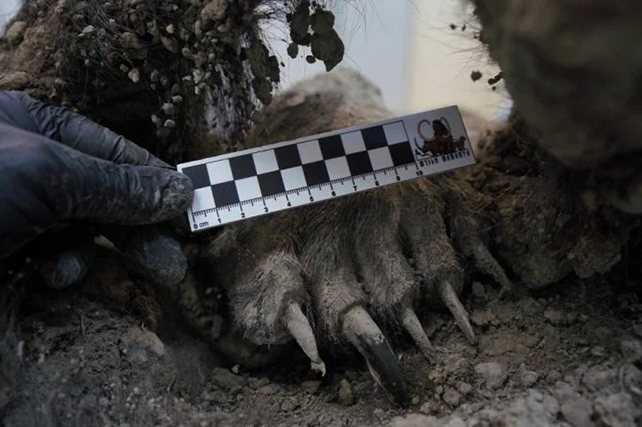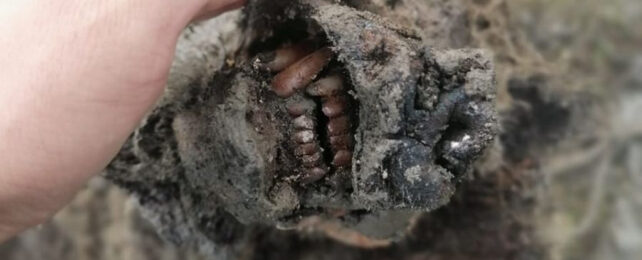An adult bear recovered from the Siberian permafrost in the Lyakhovsky Islands in 2020 is not, as originally thought, around 30,000 years old. In fact, its age is more in the region of 3,500 years old.
That's the verdict of researchers from the North-Eastern Federal University in Russia, who carried out a new necropsy of the well-preserved specimen. It remains an incredible find, offering an intriguing window into a past that isn't quite as far back as presumed.
Initially, the team thought they were dealing with a cave bear (Ursus spelaeus), a species that went extinct around 24,000 years ago. Though not quite as big as modern brown bears (Ursus arctos), some are thought to have grow to 2 meters (6.6 feet) in length and weighed as much as 1,000 kilograms (2,205 pounds).

Following the new investigation, we know we are looking at its bulkier extant cousin. With a height of 1.55 meters (5.1 feet) and a weight of 78 kilograms (172 pounds), the animal was thought to have been around 2 to 3 years old when it died of an injury to its spinal column.
"This find is absolutely unique: the complete carcass of an ancient brown bear," biologist Maxim Cheprasov, from the North-Eastern Federal University, told Reuters.
"For the first time, a carcass with soft tissues has fallen into the hands of scientists, giving us the opportunity to study the internal organs and examine the brain."
The bear shares the same mitochondrial DNA as descendants found in the north-east of Russia today, the researchers report. Its remains are so well preserved that scientists can see what it had eaten before its death: plants and birds.
One mystery the carcass can't solve is how the bear got to the Lyakhovsky Islands, currently separated from the mainland by a 50 kilometer (31 mile) stretch of water. It may have swum across, or it may have walked over a temporary ice bridge. Perhaps at that time the islands were still connected to the rest of Russia. Right now we can only guess.
To be fair to the scientists, the first assessment of its age was an estimate, pending a more detailed analysis. Further tests are due to be carried out on the remains to see what else can be gleaned from this fascinating find.
As many parts of the world warm up as the climate changes, we're seeing more and more remains emerge, preserved in the ice over millennia: from tiny, microscopic creatures to severed wolf heads.
This region of Siberia is particularly known for its preservation of ancient ecology, and has attracted lots of attention from paleontologists. With the risk that the ancient ice melt could unleash long-dormant pathogens as well, it's a history not everybody might be so happy to defrost.
